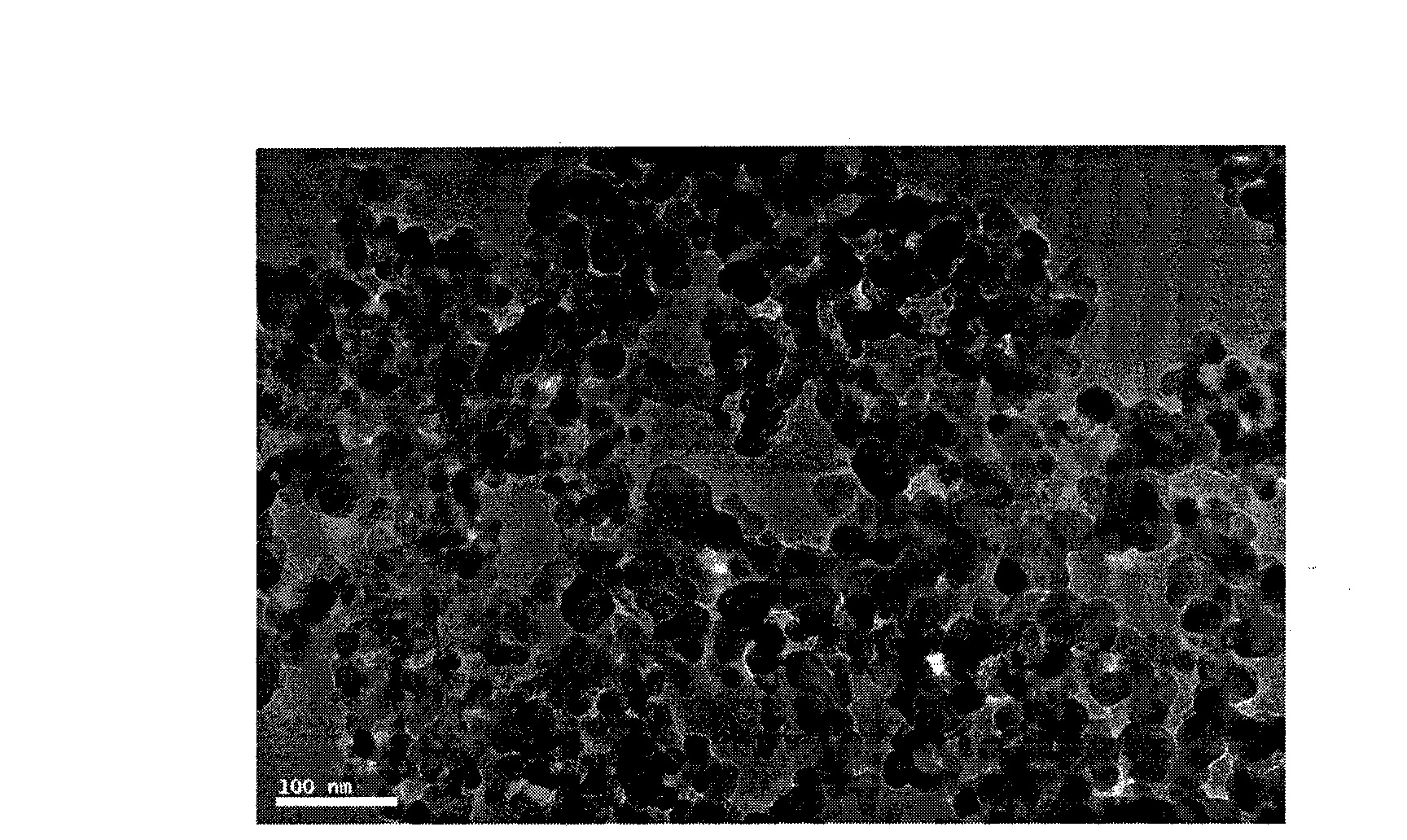Method for preparing n-type doped zinc oxide nanometer powder
A zinc oxide nano-powder technology, applied in nano-structure manufacturing, nano-technology, nano-technology, etc., can solve the problems of long cycle, uneven doping components, complex preparation process, etc.
- Summary
- Abstract
- Description
- Claims
- Application Information
AI Technical Summary
Problems solved by technology
Method used
Image
Examples
Embodiment 1
[0018] ① Dissolve 7 parts by weight of acrylic acid in 3 parts by weight of deionized water, and fully dissolve under magnetic stirring to obtain solution A;
[0019] 2. Fix the weight ratio of zinc acetate and solution A to be 15:100, weigh gallium nitrate and zinc acetate in a molar ratio of 4:100, add them to the above solution A, and obtain homogeneous system B under magnetic stirring;
[0020] 3. The deionized aqueous solution of ammonium persulfate that is 2wt% by weight is slowly added to the homogeneous system B prepared in step 2. under magnetic stirring conditions to obtain solution C. The ammonium persulfate added and the acrylic acid in step 1. The weight ratio is 0.05:1;
[0021] ④Heat and stir the C solution obtained in step ③ at 100°C for 0.1h to make the system polymerized completely, then dry at 250°C for 2h to obtain a solid, cool it and grind it, then put it in a muffle furnace, in the air atmosphere, 600°C Calcined for 3 hours under the same conditions, th...
Embodiment 2
[0026] ① Dissolve 10 parts by weight of acrylic acid in 4 parts by weight of deionized water, and fully dissolve under magnetic stirring to obtain solution A;
[0027] 2. Fix the weight ratio of zinc nitrate and solution A to be 10:100, weigh gallium sulfate and zinc nitrate in a molar ratio of 1:100, add them to the above solution A, and obtain homogeneous system B under magnetic stirring;
[0028] 3. the deionized aqueous solution of 5 wt% ammonium persulfate is slowly added to the homogeneous system B prepared in step 2. under magnetic stirring conditions to obtain solution C, the ammonium persulfate added and the acrylic acid in step 1. The weight ratio is 0.02:1;
[0029] ④Heat the C solution obtained in step ③ at 60°C for 1h to make the system completely polymerized, then dry at 180°C for 10h to obtain a solid, cool it and grind it, then put it in a muffle furnace, and calcinate it in an air atmosphere at 500°C 5h, that is, the light yellow gallium-doped zinc oxide nano...
Embodiment 3
[0033] ① Dissolve 8 parts by weight of acrylic acid in 4 parts by weight of deionized water, fully dissolve under magnetic stirring, and obtain solution A;
[0034] 2. The weight ratio of zinc sulfate and solution A is fixed to be 5:100, and gallium chloride and zinc sulfate are weighed in a molar ratio of 6:100, added to the above solution A, and homogeneous system B is obtained under magnetic stirring;
[0035] 3. the deionized aqueous solution of 10wt% potassium persulfate is slowly added to the homogeneous system B prepared in step 2. under magnetic stirring conditions to obtain solution C, the added potassium persulfate and the acrylic acid in step 1. The weight ratio is 0.01:1;
[0036] ④Heat the C solution obtained in step ③ at 80°C for 0.5h to complete the polymerization of the system, then dry at 100°C for 24h to obtain a solid, cool it and grind it, then put it in a muffle furnace, under the condition of air atmosphere and 600°C, After calcining for 4 hours, light y...
PUM
| Property | Measurement | Unit |
|---|---|---|
| Volume resistivity | aaaaa | aaaaa |
| Volume resistivity | aaaaa | aaaaa |
| Volume resistivity | aaaaa | aaaaa |
Abstract
Description
Claims
Application Information
 Login to View More
Login to View More - R&D
- Intellectual Property
- Life Sciences
- Materials
- Tech Scout
- Unparalleled Data Quality
- Higher Quality Content
- 60% Fewer Hallucinations
Browse by: Latest US Patents, China's latest patents, Technical Efficacy Thesaurus, Application Domain, Technology Topic, Popular Technical Reports.
© 2025 PatSnap. All rights reserved.Legal|Privacy policy|Modern Slavery Act Transparency Statement|Sitemap|About US| Contact US: help@patsnap.com


